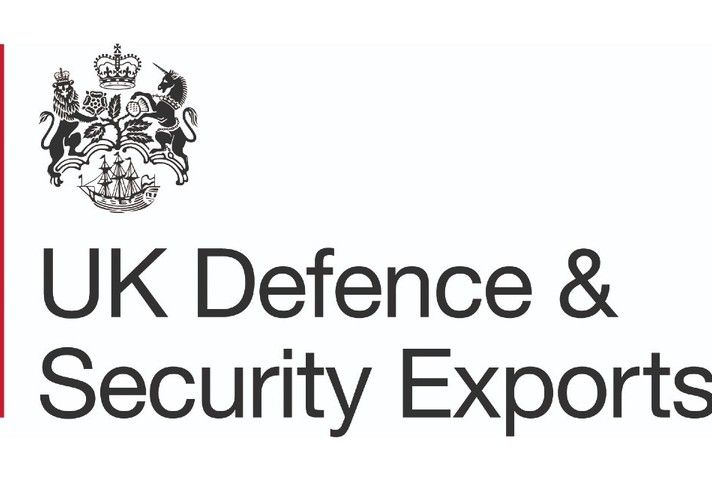.png)
Q&A INTERVIEW WITH REAR ADM (RET'D) JON PENTREATH, DSEI SENIOR MILITARY ADVISER - NAVY AND ARMY
WHAT WILL BE THE HIGHLIGHTS OF THE LAND DOMAIN AT DSEI 2023?
DSEI's Land Zone is the largest and fastest growing zone featuring the latest in weapons, ammunitions and equipment. Supported by the British Army, the Land Zone is a key platform to see first-hand the latest developments and innovations in the land domain from international exhibitors. DSEI 2023 as a whole is set to be the largest in its 24 year history. With planning well underway and the theme of “Achieving an Integrated Force” – DSEI will once more see a galvanising of UK Military, UK Defence and Security Exports (UKDSE) and the highest calibre of exhibitors from industry. The Land domain forms a large part of this, with the British Army keen to display their latest capabilities to prove they remain a first-rate power and a reference army. The British Army are likely to focus on implementing the land industrial strategy at DSEI, which will be viewed through the lens of delivering the capabilities we need now and in the future, and on continuing to build the broad alliances in order to protect our vital national and international interests.
WHY SHOULD PEOPLE VISIT DSEI 2023?
There is no other international event that encompasses such a broad span of cross-domain capabilities, and where senior representatives from governments and the defence industry can meet to discuss their priorities. DSEI connects governments, national armed forces, industry thought leaders and the entire defence and security supply chain on a global scale. There is a wide range of valuable opportunities for networking, platforms for business and extensive access to relevant content and live-action demonstrations. The DSEI community can strengthen relationships, share knowledge and allow visitors to view the latest capabilities across the exhibition’s Aerospace, Land, Naval, Security and Joint Zones.
WHAT HAS CHANGED SINCE DSEI 2021 AND HOW WILL THIS EFFECT THE SHOW?
The major change since DSEI 2021 is unquestionably the war in Ukraine. The brutal and illegal invasion by Russia has focussed minds on how to deter, and if necessary defeat, a peer/near-peer adversary in order to maintain our hard-won freedoms. The conflict represents a significant shift in how allied forces think about warfare, particularly in the land environment. We will see continuing strong support for Ukraine, not only from the UK but also from a wide range of nations across the globe, notably the US, Poland and Germany but including a very broad group of partners. Since Russia’s invasion of Ukraine on 24 February 2022, bilateral military assistance has been stepped up, with many allies for the first time supplying lethal weapons to Ukraine. For some countries such as Germany, and historically neutral countries such as Sweden, this has represented a significant reversal of their previous defence policies which ruled out providing offensive weapons. Significantly, in the land domain the US has donated M1 Abrams tanks to Ukraine, the UK has given Challenger 2s and Germany, Poland and others have gifted Leopard 2 tanks as well as large numbers of armoured vehicles, engineering capabilities and air defence systems.
The Chief of the Defence Staff, Admiral Sir Tony Radakin, has highlighted that the Ukraine war had predominantly been fought on land, but has warned against “focusing on just one domain” when evaluating Russia’s threat. He stressed: “If you see through the Ukraine war, Russia will still have its full cyber, space and nuclear capabilities and many of its long-range missile capabilities.”
DSEI is a global event but as its based in the UK will have a significant UK MOD presence. The UK can be proud to be one of the largest donors to Ukraine having committed £2.3 billion in military assistance in 2022, and has pledged to match that assistance in 2023. To be effective on the contemporary battlefield, clearly there needs to be further investment in the UK’s forces. The war in Ukraine has increased the urgency of modernising the UK’s land forces, ensuring that combined arms warfare can be fought effectively. This is not all about mere platforms or numbers of soldiers, but includes strengthened stockpiles, true readiness and a resilience in the supply chain that will allow for a sustained use of force.
HOW DOES THE LAND DOMAIN AT DSEI INEGRATE WITH OTHER DOMAINS FOR A JOINED-UP APPROACH?
Integration at a national level across the frontline commands is essential and I know that they are all in constant dialogue. Multi-domain operations was the underlying theme of DSEI 2021, and achieving an integrated force this year’s focus. One clear lesson coming from the war in Ukraine is the need for combined arms manoeuvre, which of course includes not just land forces but also air and maritime, in order to avoid the attritional artillery barrages and trench warfare we are witnessing around Bahkmut.
It is, however, vital to look beyond the national picture. To establish an effective deterrence against the sorts of horror we’re witnessing in Ukraine, the UK must focus on developing Armed Forces that are forward-deployed, equipped with the latest technologies, capable of operating across the globe and the spectrum of conflict, and integrated with allies to reinforce the rules-based system.
HOW DOES THE INTEGRATED REVIEW REFRESH CHANGE THE CONTEXT FOR DSEI?
The Integrated Review (IR23) builds on the approach of Integrated Review (IR21), setting out the next steps in delivering on its aims, against the backdrop of a “more volatile and contested world.” IR23 states the security of the Euro-Atlantic is a “core priority” and the “primary theatre” to which the UK will commit the majority of its defence capabilities, whilst continuing to support its interests around the globe and particularly within the Indo-Pacific region.
Russia was identified in IR21 the “most acute direct threat to the UK” in the Euro-Atlantic region. Following its full-scale invasion of Ukraine in February 2022, the refresh concludes “we cannot discount the possibility of an attack against Allies’ sovereignty and territorial integrity”, but the IR refresh continues to identify China as the greatest long-term threat to UK interests.
The IR refresh didn’t delve into specific capability areas, and at this stage we await the publication of the Defence Command Paper which we hope will provide the next level of detail, and which we anticipate will be announced this summer in June or July. However, there are gaps in the capabilities the UK has committed to NATO within its defence planning process, arguably most notably in the land domain as it recovers from 2 decades of counter insurgency operations in Iraq and Afghanistan. The Secretary of State for Defence has said that “UK land capabilities were 15 years behind the UK’s peers”. He told the House of Lords International Relations and Defence Committee that the current armoured division was “lacking in all sorts of areas” including deep fires, medium-range air defence, electronic warfare and signals intelligence capability. The Army’s response to these challenges will be on full display at DSEI 2023, not only on the show floor but importantly also in the conceptual space in the keynote addresses and other conference sessions.
-
British Army Reshapes Training in line with Ukraine Lessons
10 Aug 2023 Army TechnologyThe Army’s exercise Iron Cyclone re-generates “basic skills and mastering combined arms competency” for the modern warfare observed in Ukraine. The British Army is “regenerating basic skills and maste ... -
Modernising Warfare: The Future Armoured Vehicles Market and the Race for Cost-Effective Innovation
15 Aug 2023 Deon GroblerThe military armoured vehicle market is at a crossroads, caught between a need for enhanced capabilities and constrained defence budgets. Modern military forces worldwide are grappling with how to sus ... -
Cutting-Edge Defence Capabilities, Ammunition and Equipment for Land Operations Set to be Displayed at DSEI
08 Aug 2023 DSEIDefence and Security Equipment International (DSEI) returns to ExCeL London this year from 12-15 September. Attracting leading companies from the UK and abroad, DSEI will feature the latest advances i ...

)
)
)
)

